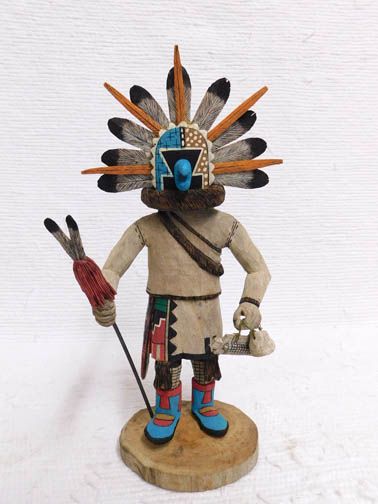 Western cultures tend to celebrate major holidays like Christmas and New Year’s, but the Native peoples of America have always had their own traditions during this time of year. In fact, as February approaches the Hopi tradition of Powamuya is nearly ready to start. The English translation generally refers to it as the Bean Dance.
Western cultures tend to celebrate major holidays like Christmas and New Year’s, but the Native peoples of America have always had their own traditions during this time of year. In fact, as February approaches the Hopi tradition of Powamuya is nearly ready to start. The English translation generally refers to it as the Bean Dance.
Understanding the Powamuya
As with most traditions, this ceremony is practical and spiritual. It is known as the purification month, which is a time when the people ready themselves to accept the spirits back into their lives. This is all done in practical preparation for planting. Planting crops is an important event, and the people naturally call on a spiritual backing to make sure that things go well.
The complexity of this event takes on other meanings as well. In fact, this celebration is also viewed as a coming of age ritual. During this time, children over the age of 5 are given responsibility for planting for the first time, thus their participation in the ceremony signifies that they are ready to be active among the people. After their participation, these children are allowed to take part in Katsina ceremonies.
The Start of Powamuya
Like any tradition, this celebration is very well defined for the Hopi. It starts when their children are given their first beans to grow in the kivas. This happens before the full planting season begins. In this way, the planting of beans in the kivas is highly symbolic of what is to come. During this time, Muyingwa appears. Muyingwa is one of the revered Katsinam, and his appearance as chief and master is intended to encourage and guide these young people. He ushers them fully into the Katsina culture.
This is not merely a ceremony for the young people of the tribe. In fact, these young people are called upon to pray to the Katsinam, entreating these spirits to appear among the people. The Ahöla or high priest will also join the prayers, calling for a blessing of all the homes within the village.
With the beans planted, time is taken for sprouts to grow. More activities take place during this time. Whipper Katsinam moves through the villages at night, ensuring that all the people are behaving appropriately. If not, discipline is rendered. Children are whipped, but this act is intended to purify them. They need to be ready to meet their spirit beings.
The Culmination of the Bean Dance
When enough time has passed, the sprouts are presented to the tribe. In celebration, a procession begins. This procession is at the heart of the celebration. It winds through the village with the new initiates leading the way with traditional celebratory dancing. They provide gifts during the procession, handing them out to the people throughout the village. This can include dolls, dancing wands, bows and arrows and more. These gifts are blessings, intended to reward good behavior.
However, as part of the tradition, there are also punishments handed out. Spiritual guides such as Grandmother Katsina or the Soyokos provide warnings to unruly children. The dancers also portray a family of ogres, who scare the young and old alike, reminding them to be obedient. Therefore, this time of purification serves as a time of reflection, charging all the people to make changes in the coming year.
Finally, the celebration ends with a special blessing, and there is a social dance to heal things. The bad spirits are forced out of the village, and the people are allowed to return to peace and productivity. In this manner, the celebration is intended for all the people. It is a very serious event with deep cultural implications for the Hopi. It lasts between nine and 16 days in February each year. The growth of the plants is taken as a sign of how productive the harvest will be in the coming year.


Hello, I was wondering do you buy old Katchina dolls? I have a collection that was my mother’s from the 1960’s living in Nevada. I would like to sell them, they are all different sizes and each one unique.
Thank you –
Hello, Mary. We do purchase dolls from private sellers. We would need to see photos of each doll and its base for signature. Also the height of each piece and if you have a price in mind. Thank you for asking.